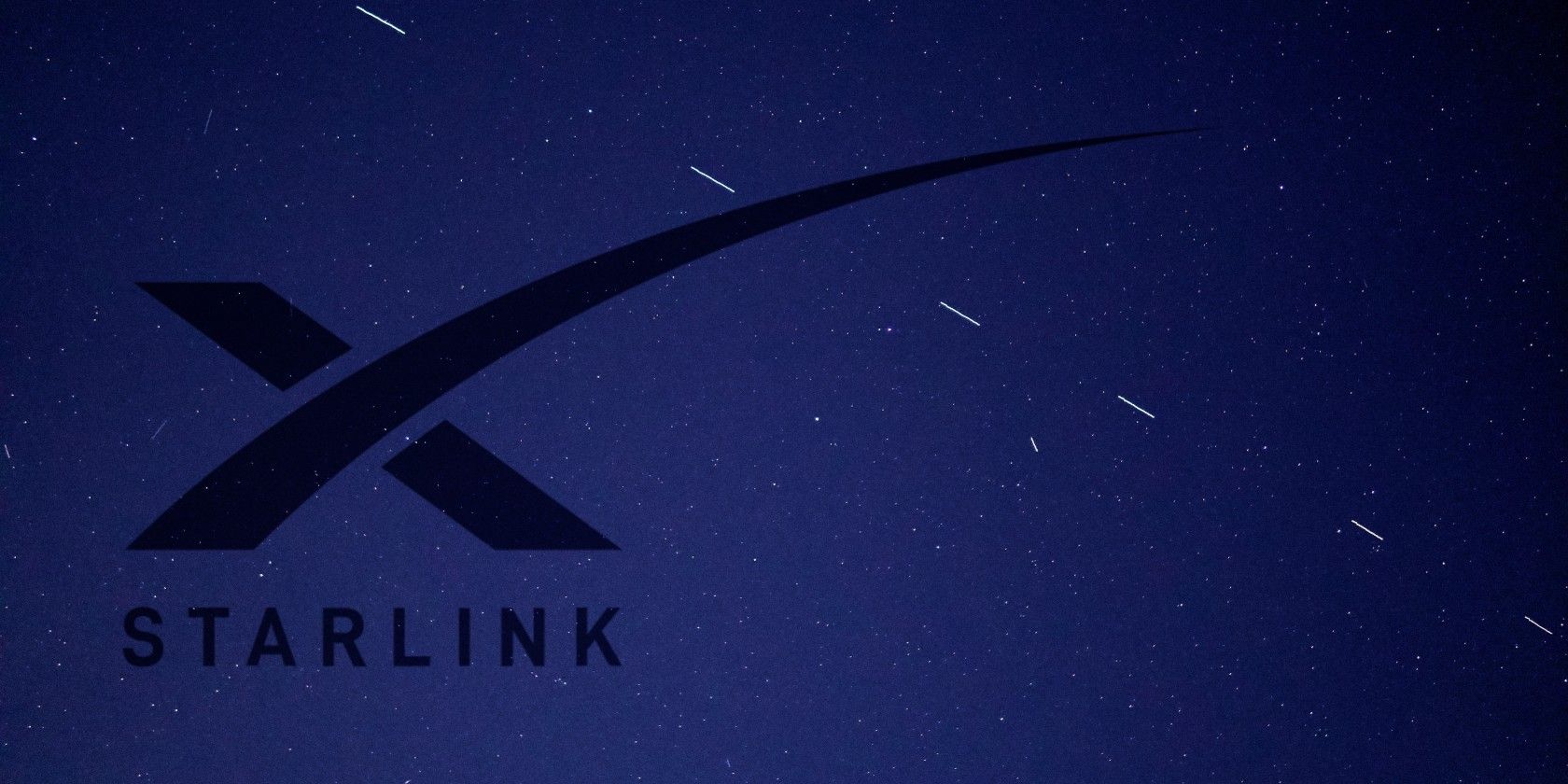If you’ve looked up at the beautiful night sky at any point during 2020, you may have seen some unexpected new additions to the vista. No, I’m not talking about extraterrestrial visitors. Rather, the introduction of hundreds of new low Earth orbit satellites that form part of SpaceX’s Starlink project.
So, what is Starlink? When will Starlink be available for regular consumers? And how does satellite internet work, anyway?
What Is Starlink?
Starlink is a satellite constellation project that will place thousands of small satellites in low Earth orbit (LEO), 550 kilometers above us. The array will beam internet signals from the satellites down to ground transceivers, which in turn, broadcast locally or wire directly to your Starlink router.
Starlink is not the same as a cellphone signal or 5G. It allows a home, business, or remote location to connect to the internet via satellite.
At the time of writing, 800 Starlink satellites are orbiting the planet. SpaceX plans to deploy at least 12,000 satellites, with plans for up to 30,000 to ensure global internet coverage via Starlink (some figures put the total as high as 42,000).
How Does Satellite Internet Work?
Satellite internet works similarly to cable internet, except there are a few more moving parts (literally!). Here is a brief summary:
- You head to MakeUseOf to catch up on the latest technology news. Your data request passes from your computer to a satellite internet dish attached to your home (or a nearby location).
- The satellite internet dish broadcasts the data request to a satellite orbiting the Earth. In turn, the satellite sends the request to the ISP.
- Sending your data back reverses the process, transmitting data from the provider to the satellite, then the satellite to the satellite internet dish, down to your router, and onto your computer.
- You arrive at MakeUseOf and begin reading!
That is the basic outline of how satellite internet works.
How Fast Is Starlink Internet?
Starlink is advertising download speeds up to 1Gbps when the service becomes fully functional. SpaceX is “targeting latency below 20 milliseconds, so somebody could play a fast-response video game at a competitive level” using the service.
In August 2020, Starlink opened its beta launch program to several users throughout high latitude regions of the USA and Canada, such as Seattle, Chicago, and Portland. There are some very promising results among speed tests available to the public via services such as Ookla’s Speedtest and TestMy, with a handy Reddit list illustrating some of the best speeds (and the image above displaying the average speed).
- According to the list, Starlink’s fastest confirmed speed is 203.74Mbps, with a ping of 29ms.
- The fastest overall ping is 18ms.
- The fastest upload seen is 42.58Mbps.
Clearly these are remarkable speeds that will only get better as more Starlink satellites hit the skies. As the Starlink beta testers signed a non-disclosure agreement for the service, the speed tests provide some of the best insight into how the service operates.
Is Starlink Faster than Fiber?
The answer depends on your provider. Consumer-grade fiber internet currently tops out at around 1Gbps. Right now, Starlink isn’t as fast as fiber but is faster than some of the alternative internet technologies. Given SpaceX’s history of delivering massive projects, I would expect Starlink to become faster and faster.
The Starlink speeds are faster than my fiber-to-the-cabinet connection, that’s for sure!
You should also note that Starlink isn’t attempting to compete with fiber services, either. Rather, Starlink is targeting rural users and remote locations, offering those people much faster internet than previously thought possible (or at least at faster speeds and with less restriction).
Who Can Use Starlink?
When the full array of Starlink satellites is in orbit, the service will offer “near global-coverage of the populated world.” For the time being, only select users in North America can use Starlink.
There are other considerations, too. For example, Starlink may offer coverage in your country, but whether you can use it comes down to national regulation.
Australia has given Starlink the all-clear for satellite internet coverage, as have several others. But countries such as China and Russia will require special regulation of the service if they allow Starlink to broadcast on their frequencies at all. Another alternative is to ban the sale and use of Starlink ground terminals.
So, the answer isn’t as straightforward as switching Starlink’s satellite receiver on as soon as you have coverage.
Will Starlink Benefit Remote Areas?
Starlink will provide global satellite internet coverage. For people living in remote areas, Starlink could change how they use the internet entirely. How much benefit Starlink provides, however, links to the question below.
One definite benefit of Starlink for remote locations is latency (response time). If you’re in a remote area, building a long cable is costly and comes with the potential downside of high latency. Starlink data transmissions will take place partially within the vacuum of space, potentially reducing latency. At the very least, Starlink’s response time will be excellent for remote locations.
How Much Will Starlink Cost?
The Starlink beta phase, officially known as the Better Than Nothing Beta, set early adopters back $499 for the Starlink antenna and router, plus another $99 per month for the subscription.
As yet, there is little indication of final price structures for Starlink, or even what any subscription plan might entail.
Can I See the Starlink Satellites from Earth?
In mid-2020, Starlink hit the news. Everyone cooped up at home as part of the coronavirus lockdowns would receive a special display in the night sky. SpaceX launched hundreds of new Starlink satellites over a short period. Before the satellites ascend to their LEO, you can easily spot them racing through the night sky, like a train of UFOs.
Once the satellites are in position, 550km above the Earth, you’ll struggle to see them with the naked eye. They are visible using a telescope, much to the chagrin of astronomers and space enthusiasts.
How Will Starlink Affect Astronomy?
Starlink’s effect on astronomy is still being understood—but the initial feedback from night sky observers and scientists is poor. The worry that Starlink is going pollute the LEO area with artificial light from the satellites seems mostly founded.
A SpaceX experiment, DarkSat, aims to reduce the light pollution of the satellites. SpaceX claims to have reduced the light pollution on test satellites by around 55-percent in comparison to regular Starlink satellites. However, this is still “far too bright for astronomers’ ultra-sensitive instruments, which can observe stellar objects four billion times fainter than that threshold.”
While Starlink has just 800 or so satellites in the sky, it isn’t a huge problem. But when there is a train of 12,000 or a massive upper limit of 40,000 satellites, artificial light pollution could become a glaring issue.
Is Starlink Safe?
Starlink is safe in terms of data transmissions. It isn’t 5G, which some people worry about. It isn’t the same as Wi-Fi, either. Starlink uses existing frequency bands (the Ka and Ku bands) that have long been used for satellite communication without issue.
Starlink Satellite Internet Is Coming to You
Starlink will continue sending satellites into orbit. Satellite internet users will rejoice at the prospect of faster, lower-cost internet connections wherever they live, wherever they travel. The price will likely fall, too, as hardware manufacturing increases and production lines ramp up.
About The Author

